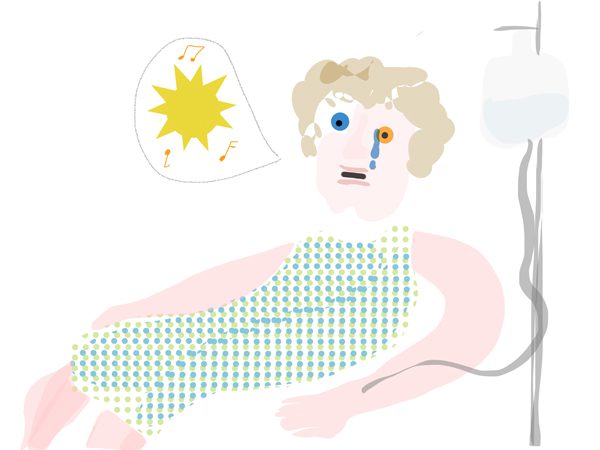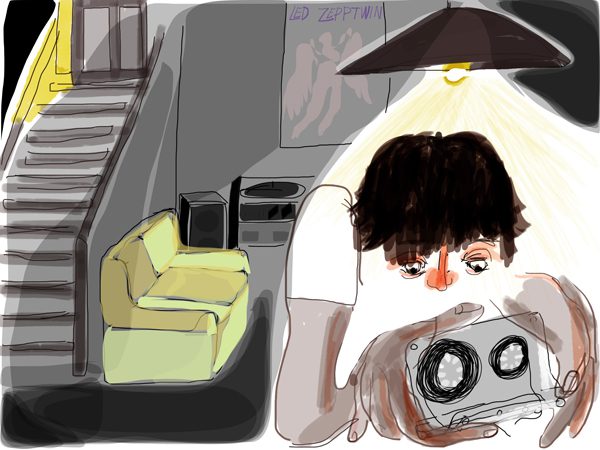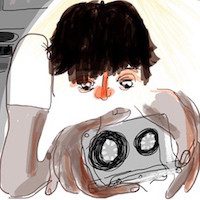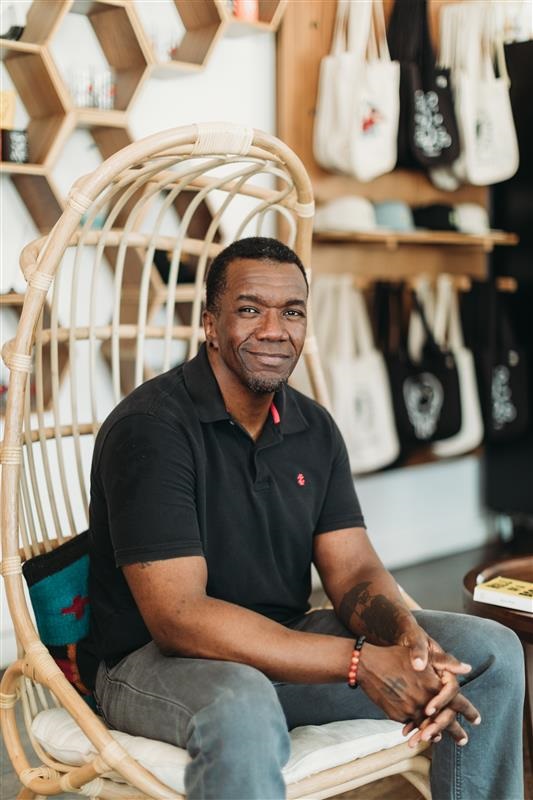I thought that Terry Jacks was dying, that “Seasons in the Sun” which played endlessly on AM radio that year was his goodbye letter to the world, that as he sang he knew that he was dying, that his body was shutting down, the melody and the words a gentle but tragic farewell to his family and his friends, their mammoth grief now shared with millions, none of this really explainable to me, neither by my older brothers nor by myself, how a song could exist on the radio that was so sad, so utterly sad, not sad in the way “The Night the Lights Went Out in Georgia” or “Daniel” was sad, or in the way that “The Theme from Love Story” was sad, the simple melody of which was everywhere for a while then, too, but throat-tightening sad, a song that as it played made me desperate to wordlessly turn to my brothers and sister in the rec room or in the car and ask Why?, why is this happening, why is Casey Kasem playing this man’s death song, how can something so sad be so public, and why are your friends laughing, none of these ideas really available to me at the time but in the language that my cold chest spoke when the song came on WPGC and I again pictured Terry Jacks on his deathbed in a hospital, his weeping family around him, or—was he dead already? Is the song I’m listening to a melody and a clenched apology for mortality issuing from the grave? And either way it was a desolate season for me, the start of something ineffable, the unhappy, unwanted blend of a sing-song melody and grief, popular radio on a sunny Saturday afternoon and half-thoughts of death and dying, all of it a blur of presentiment and incomprehension, and when the song disappeared, as all Top 40 songs do, I thought that Terry Jacks, whoever he was, wherever he was, went with it too, gone forever but for this wrenching goodbye trailing him, until years later when I learned that nah, Jacks is alive, somewhere up in Canada, he’d never died or been ill when he released the song, urban legend, it was a cover of some old French song anyway, and get this, the b-side of the single, you’re not gonna believe it, was called “Put the Bone in”!—all the adolescent irony I’d need to erase, for a while, the season of sadness.
And either way it was a desolate season for me, the start of something ineffable, the unhappy, unwanted blend of a sing-song melody and grief, popular radio on a sunny Saturday afternoon and half-thoughts of death and dying, all of it a blur of presentiment and incomprehension, and when the song disappeared, as all Top 40 songs do, I thought that Terry Jacks, whoever he was, wherever he was, went with it too, gone forever but for this wrenching goodbye trailing him, until years later when I learned that nah, Jacks is alive, somewhere up in Canada, he’d never died or been ill when he released the song, urban legend, it was a cover of some old French song anyway, and get this, the b-side of the single, you’re not gonna believe it, was called “Put the Bone in”!—all the adolescent irony I’d need to erase, for a while, the season of sadness.
In the Basement Era all you needed was a steady hand, a screwdriver, some Scotch tape, and the nerve to believe that a cassette tape could be broken into, and if you were lucky not to fatally crack the plastic case and get in, the world inside was promising, somehow comforting in its thereness, its motocross of tape and spindles over which you hover in a kind of preteen omniscience, your fingers impossibly large, trembling now to find and lift one end of the snapped tape and with a sliver of Scotch tape marry it back to the other end, all the while feeling, because you’d watched The Wizard of Oz again with the family last night, that you’ve pulled aside the curtain, magic, and private, the cassette tape vanishing and emerging from a dark you’ve now flooded with basement fluorescent light, humming, nervous as you reattach the plastic housing, hoping against hope that when you press play the homespun little-boy mend won’t catch on the tape heads and split again, not aware even in your deepest imagination that one day tape will recede from the basements and bedrooms and rec rooms and from beneath tires on the driveway and the streets out front, that one day the dark that you’ve imagined inside your Certron C90, the dark you cracked as puberty loomed and all sorts of unsolvable mysteries upstairs threatened, the dark entered with the suburban toolkit of tape-and-wish would merge with an anti-language spoken in 1’s and 0’s, the dark that once seemed impenetrable would come to be seen as less a mystery to ponder than a digital nothingthere to never quite understand, a dark that stymies boys when they have the urge to fix things. Keep out.
that you’ve pulled aside the curtain, magic, and private, the cassette tape vanishing and emerging from a dark you’ve now flooded with basement fluorescent light, humming, nervous as you reattach the plastic housing, hoping against hope that when you press play the homespun little-boy mend won’t catch on the tape heads and split again, not aware even in your deepest imagination that one day tape will recede from the basements and bedrooms and rec rooms and from beneath tires on the driveway and the streets out front, that one day the dark that you’ve imagined inside your Certron C90, the dark you cracked as puberty loomed and all sorts of unsolvable mysteries upstairs threatened, the dark entered with the suburban toolkit of tape-and-wish would merge with an anti-language spoken in 1’s and 0’s, the dark that once seemed impenetrable would come to be seen as less a mystery to ponder than a digital nothingthere to never quite understand, a dark that stymies boys when they have the urge to fix things. Keep out.
A scratch on a 45 or an album was the uninvited bully, the mean kid who shows up at your party, a little gouge you’d see with a sinking stomach as you held the album up to the light to reveal the chip, the dent, the cut. We’d try to shoo away the skip by placing a penny on the tone arm or, when that didn’t work and we were feeling bold or desperate enough, by pressing down ever so lightly on the cartridge as the skip approached—right after the chorus or right when the solo starts or during the first line of the bridge, the interruption you’d come to know as a wound that never healed right—my finger shaking slightly, and I’m hoping for just the right touch, just the right balance between pressure and lift so when that skip comes the needle would move right through, unafraid, and the next time we’d play the album the needle would play right through him again and eventually he’d get the message.
We’d try to shoo away the skip by placing a penny on the tone arm or, when that didn’t work and we were feeling bold or desperate enough, by pressing down ever so lightly on the cartridge as the skip approached—right after the chorus or right when the solo starts or during the first line of the bridge, the interruption you’d come to know as a wound that never healed right—my finger shaking slightly, and I’m hoping for just the right touch, just the right balance between pressure and lift so when that skip comes the needle would move right through, unafraid, and the next time we’d play the album the needle would play right through him again and eventually he’d get the message.
***
Rumpus original art by Liam Golden.




